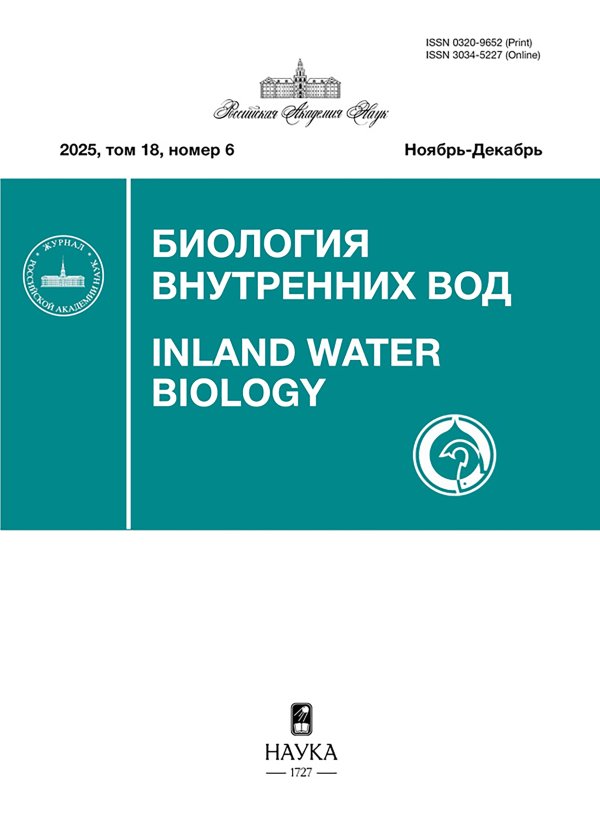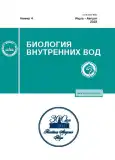Comparison of Cryoresistance of Testicular and Urinal Spermatozoa of the Toad Bufo bufo (Amphibia, Anura, Bufonidae) during Slow Freezing
- Authors: Shishova N.V.1, Kaurova S.A.1, Uteshev V.K.1, Gakhova E.N.1
-
Affiliations:
- Institute of Cell Biophysics of the Russian Academy of Sciences
- Issue: No 4 (2023)
- Pages: 570-574
- Section: КРАТКИЕ СООБЩЕНИЯ
- URL: https://journals.rcsi.science/0320-9652/article/view/134931
- DOI: https://doi.org/10.31857/S0320965223040204
- EDN: https://elibrary.ru/SEFTEQ
- ID: 134931
Cite item
Full Text
Abstract
A comparative study of the morphofunctional parameters of testicular (non-activated) and urinal (activated) spermatozoa of the common toad Bufo bufo (L., 1758) before and after cryopreservation was carried out. Cryopreservation was performed by a slow method. Sucrose (10%) and dimethylformamide (12%) were used as cryoprotectants. It was shown that the pool of testicular spermatozoa contains significantly more cells with abnormal morphology both before and after cryopreservation. The osmoticity of the base medium for the cryoprotective solution (Ringer’s solution for amphibians – 230 mOsm or urinal plasma – 45 mOsm) had little effect on the survival of testicular and urinal spermatozoa during cryopreservation. Comparison of the morphological and functional characteristics of spermatozoa before and after freezing-thawing indicates that the cryoresistances of testicular and urinal spermatozoa differ slightly.
Keywords
About the authors
N. V. Shishova
Institute of Cell Biophysics of the Russian Academy of Sciences
Author for correspondence.
Email: cryopreservation@list.ru
Russia, Moscow Region, Pushchino
S. A. Kaurova
Institute of Cell Biophysics of the Russian Academy of Sciences
Email: cryopreservation@list.ru
Russia, Moscow Region, Pushchino
V. K. Uteshev
Institute of Cell Biophysics of the Russian Academy of Sciences
Email: cryopreservation@list.ru
Russia, Moscow Region, Pushchino
E. N. Gakhova
Institute of Cell Biophysics of the Russian Academy of Sciences
Email: cryopreservation@list.ru
Russia, Moscow Region, Pushchino
References
- Юшкова Е.А., Боднарь И.С., Шадрин Д.М. и др. 2018. Цитогенетические и молекулярно-генетические показатели в популяциях бесхвостых амфибий (Rana arvalis Nilsson) в условиях радиоактивного и химического загрязнения водной среды // Биология внутр. вод. № 3. С. 83. https://doi.org/10.1134/S0320965218030233
- Beebee T.J.C., Griffiths R.A. 2005. The amphibian decline crisis: a watershed for conservation biology? // Biol. Conserv. V. 125. P. 271. https://doi.org/10.1016/j.biocon.2005.04.009
- Browne R.K., Clulow J., Mahony M., Clark A. 1998. Successful recovery of motility and fertility of cryopreserved cane toad (Bufo marinus) sperm // Cryobiology. V. 37. P. 339. https://doi.org/10.1006/cryo.1998.2129
- Burger I.J, Lampert S.S., Kouba C.K. et al. 2022. Development of an amphibian sperm biobanking protocol for genetic management and population sustainability // Cons. Physiol. V. 10. Iss. 1. coac032. https://doi.org/10.1093/conphys/coac032
- Clulow J., Clulow S. 2016. Cryopreservation and other assisted reproductive technologies for the conservation of threatened amphibians and reptiles: bringing the ARTs up to speed // Reprod. Fertil. Devel. V. 28. № 8. P. 1116. https://doi.org/10.1071/RD15466
- Gardner T.A., Barlow J., Chazdon R. et al. 2009. Prospects for tropical forest biodiversity in a human-modified world // Ecol. Lett. V. 12. P. 561. https://doi.org/10.1111/j.1461-0248.2009.01294.x
- Guy E.L., Gillis A.B., Kouba A.J. et al. 2020. Sperm collection and cryopreservation for threatened newt species // Cryobiology. V. 94. P. 80. https://doi.org/10.1016/j
- Hopkins B.K., Herr C. 2008. Cryopreservation of frog (Ranapipiens) sperm cells collected by non-lethal methods // Reprod. Fertil. Devel. V. 20. № 1. P. 120. https://doi.org/10.1071/RDv20n1Ab78
- Kouba A.J., Vance C.K. 2009. Applied reproductive technologies and genetic resource banking for amphibian conservation // Reprod. Fertil. Devel. V. 21. № 6. P. 719. https://doi.org/10.1071/RD09038
- Kouba A.J., Vance C.K., Frommeyer M.A., Roth T.L. 2003. Structural and functional aspects of Bufo americanus spermatozoa: Effects of inactivation and reactivation // J. Exp. Zool. V. 295. № 2. P. 172. https://doi.org/10.1002/jez.a.10192
- Langhorne C.J., Calatayud N.E., Kouba A.J. et al. 2013. Cryoconservation: successful sperm cryopreservation and develop-mental outcomes using endangered North American amphibians // Cryobiology. V. 67. № 3. P. 405. https://doi.org/10.1016/j.cryobiol.2013.09.032
- Poo S., Hinkson K.M. 2019. Applying cryopreservation to anuran conservation biology // Conserv. Sci. Pract. V. 1. e91. https://doi.org/10.1111/csp2.91
- Shishova N.V., Uteshev V.K., Kaurova S.A. et al. 2011. Cryopreservation of hormonally induced sperm for the conservation of threatened amphibians with Rana temporaria as a model research species // Theriogenol. V. 75. № 2. P. 220. https://doi.org/10.1016/j.theriogenology.2010.08.008
- Uteshev V.K., Gakhova E.N., Kramarova L.I. et al. 2019. Cryobanking of amphibian genetic recourses in Russia: past and future // Russ. J. Herpetol. V. 26. № 6. P. 319. https://doi.org/10.30906/1026-2296-2019-26-6-319-324
Supplementary files











